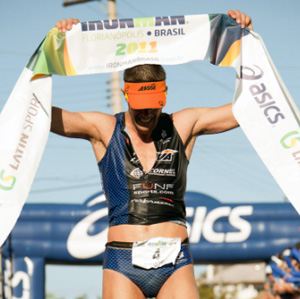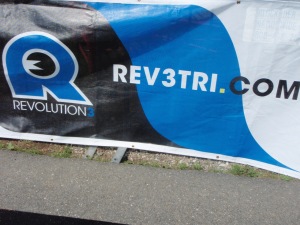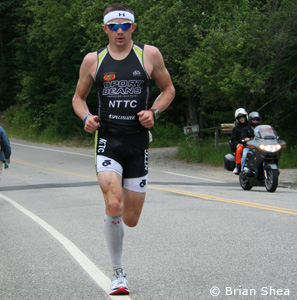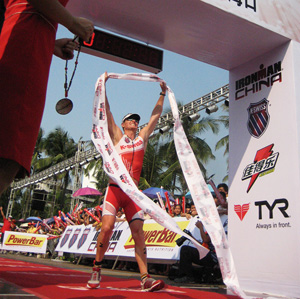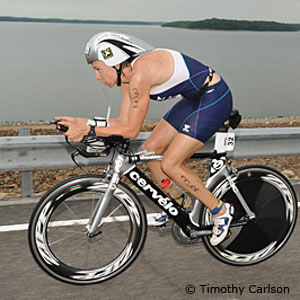Amy Marsh begins cancer fight
After a December 23 diagnosis of Acute Myeloid Leukemia (AML), Amy Marsh’s life has been turned upside down from that of a hard training, elite long distance triathlete to a patient in a fight for survival against a fast-moving but treatable cancer.
AML is a type of blood and bone marrow cancer which requires multiple rounds of chemotherapy followed, in some cases, by a stem cell transplant. Fortunately for the 4-time Ironman winner and 2-time Ironman-distance champion, frequent blood tests monitoring her reaction to strenuous high-altitude training revealed her illness early in the game which provides a crucial head start against a fast-moving cancer.
After winning Ironman 70.3 Raleigh June 1 and placing 5th at Ironman Frankfurt in July, Marsh went to her doctor and found she had a case of the shingles. After a regular blood tests Marsh takes to monitor her summer high-altitude training in Flagstaff Arizona, doctors found several blood counts that were described as “oddities.” Apart from general tiredness and the blood counts, doctors found Amy “asymptomatic” for AML upon initial examination. She was not anemic and her platelet counts were normal, but abnormal results indicating AML might include abnormal white blood cell or red blood cell counts. Marsh submitted to a definitive diagnosis (a bone marrow biopsy) on December 18 and received the results two days before Christmas.
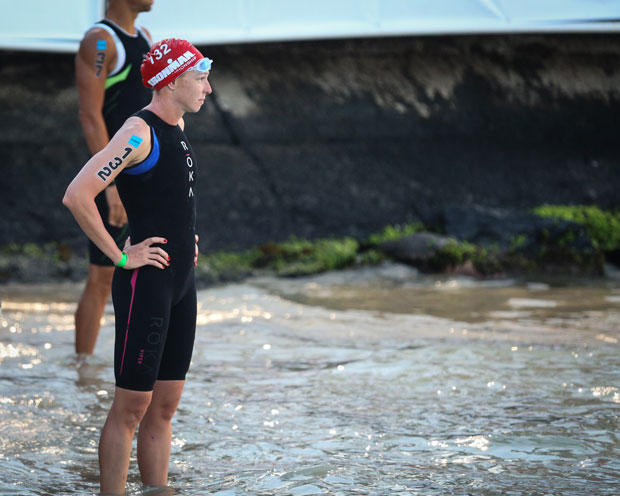
According to the Cancer Treatment Centers of America, AML occurs when a cell in the bone marrow that would normally differentiate into blood cells (white cells, red cells and platelets) acquires a mutation that turns it into a leukemic cell: this abnormal, immature cell, called a blast, starts to multiply very fast and the marrow rapidly fills with blasts. This reduces the production of healthy cells – the white cells which fight off infections, the red blood cells which carry oxygen to the body and the platelets which prevent bleeding. AML usually progresses quickly.
Within days of the diagnosis, Amy began the induction round of chemotherapy at Seton Medical Center at her home in Austin, Texas in which a combination of drugs was used to destroy as many leukemia cells as possible to bring blood counts toward normal. After this first round of chemotherapy concluded in the first week of January, her husband, fellow professional triathlete Brandon Marsh, reported that Amy’s white blood counts were low and her immune system was very vulnerable. Such levels are to be expected because, as Brandon reported, “chemo attacks fast growing cells like bone marrow and blood cells, hair, skin etc. As an athlete who prizes red blood cells, hemoglobin, and a high hematocrit count, it is tough to see those numbers fall, but they fall as well.”
For Amy Marsh, the second stage of treatment is known as stem cell transplantation. According to the Dana-Farber Cancer Institute, there are two types. A bone marrow transplant describes the procedure when stem cells are collected from the bone marrow of the donor. If the stem cells are harvested from the circulating blood, the procedure is known as a blood stem cell transplant.
Measured against the norm of AML patients, Brandon reports that her doctors are optimistic about Amy’s long range prognosis. “Her overall general health definitively helped the doctors’ positive outlook,” he wrote in the couple’s Team Marsh blog. “Another reason for optimism is that her blood values and bone marrow biopsy results could have been a lot worse.”
Within a month, pending identification of a suitable donor, Amy will transfer to the famed MD Anderson cancer treatment center in Houston, Texas to begin her stem cell transplant treatment. The first potential donor candidate will be her brother Andrew Cottrill. The odds of success for a close relative being a bone marrow/stem cell match is 25 percent.
If her brother is not a suitable donor, Amy and Brandon Marsh have reached out to several organizations to mobilize the search for a match. The Marshes have alerted supporters that they may register with the BeTheMatch website to be considered for stem cell donation. In addition, the Marshes have contacted a group called Delete Blood Cancer which is doing a bone marrow/stem cell swab/match drive on Saturday, January 24 in Austin.
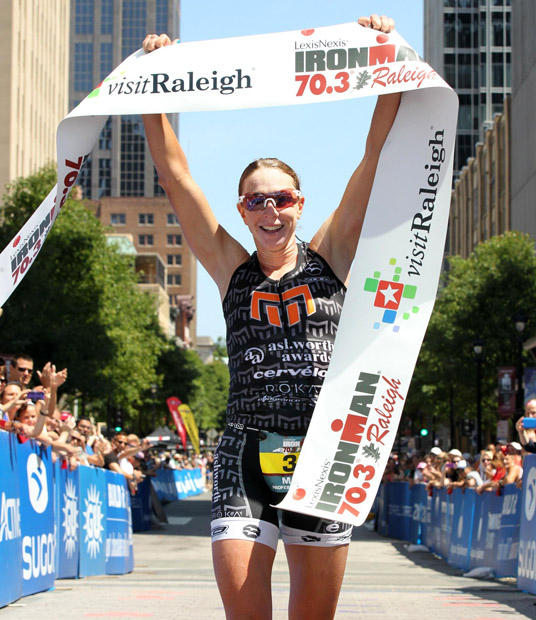
Offers for help have been overwhelming, says Brandon, who has become the point man for Amy’s beat cancer campaign. “What I know is this will be a long journey,” wrote Brandon on a Team Marsh blog. “Long hospital stays, chemotherapy, bone marrow transplantation are all part of it. And there will be many other unexpected things along the way.”
As Amy and Brandon have been self-employed professional triathletes and coaches for six years, Brandon stated that there will be “expenses related to Amy’s care that are not prepared for or that insurance will not cover.” In anticipation, they have set up a separate account for Amy’s medical expenses that their insurance will not cover. Amy’s YouCaring account is a convenient way to donate.
The Marshes have also established an alternate way to donate. Brandon writes, “If you would like more information and/or to make a direct payment from your bank account without any fees, you may contact Amy’s brother Andrew Cottrill by phone at 512-863-8795.”
Anticipating extensive need for blood transfusion and platelets, Amy is registered at The Blood and Tissue Center of Central Texas. Donations can be received at their Lamar Blvd. location in Austin or in Round Rock.
For stem cell transplant and follow-up therapy, The Blood and Tissue Center of Central Texas also serves MD Anderson. To make the donation specific, let them know the donation is for Amy Marsh. So far, the YouCaring.com account for Amy Cottrill Marsh has raised over $20,000 toward a $100,000 goal.
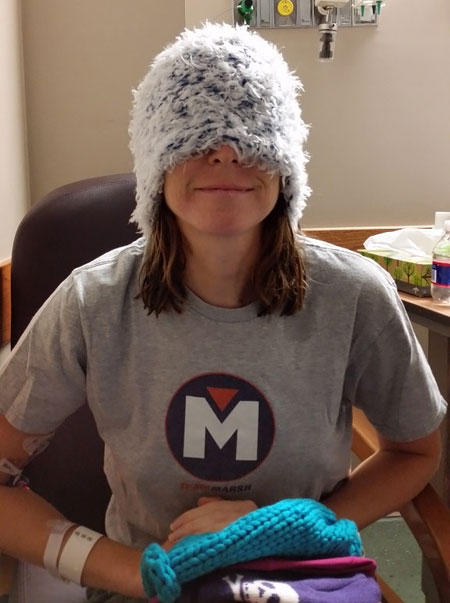
As Amy has been exhausted with her treatment, Brandon has become the spokesman and contact with the doctors, agencies and thousands of concerned friends and fans who have offered their support and Brandon answered a few questions about Amy’s current status.
Slowtwitch: Looking back, what were little signs that something was wrong – things that might usually be written off as the usual exhaustion of that comes with being a world class Ironman triathlete?
Brandon Marsh: Of course, you can look back and second guess just about everything, and you really get nowhere with that since that's not where you are now. When you have the answer (Amy has AML), certain things can make sense in retrospect. Some tiredness that seemed a bit out of the ordinary, mainly in the September/October time frame when Amy wasn't training much at all. And she commented recently that she remembers looking in the mirror at one point just thinking, “Something isn't right – I look exhausted. Looking back, Amy's general fatigue from training seemed a bit out of what we considered her normal ranges, even for an exhausted IM athlete. But, even then in December when we received the diagnosis the doctor was surprised because most of the typical symptoms didn't show up.”
ST: Knowing what you have learned about AML, what were some stressors in her life, and perhaps in her genetic makeup, that might have been factors?
Brandon: There really aren't, at this time, any general genetic factors or life stressors, etc. that can be pointed to for AML. Benzene exposure can be one factor. Smoking is another. Neither of those apply to Amy. Really, it's a 'bad luck' kind of diagnosis. LLS.org and Cancer.org outline some of these causes.
ST: From what I have read, AML more often strikes older people who are weaker than a young athlete. Do her doctors have some optimism because of her strength, endurance and fitness?
Brandon: The main thing that the fitness and strength have helped is Amy's handling of the chemotherapy. There have been days where a 10 minute walk around the hospital would be too much. But generally, compared to most patients, being fit and healthy has helped. It seems to us that cancer really doesn't differentiate whether you're fit or not, and as doctors learn more about the different types of cancers, the treatments can be more specific. That is why Amy will need a stem cell transplant. Being fit and healthy though does enable one to handle treatments that an older or possibly weaker person might not be able to handle.
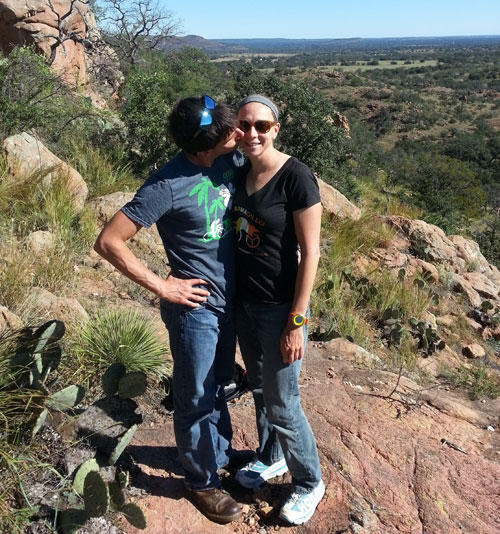
ST: Cancer information websites say that this is fast-moving type of cancer which must be confronted quickly. Did your regular, fitness-related blood work contribute to an early diagnosis and give Amy a better chance?
Brandon: For the past few years, we've been going to the local Any Lab Test Now to get blood tests regularly around our altitude training in Flagstaff, AZ during the summers. Without that, it might have been February at the earliest when Amy had her general check-up that anything might have shown up. Self-managing some of our testing helped.
ST: Hopes are that Amy’s brother can provide a match as a marrow donor. If not, what is the procedure for finding one? And what are the odds that that a family member can work out?
Brandon: The statistics for a sibling match are somewhere around 25%, so Amy's brother will be the first person to be checked. If he isn't a suitable match, then the doctors will look in the bone marrow registry for a suitable match. We have a link on our 'How Can I Help' page about a bone marrow matching drive that we will be doing on Saturday January 25, 2015. It is through Sharing America's Marrow and Delete Blood Cancer. It's not only important for Amy, but others as well to have as many people as possible in the registry. Tissue type is inherited based on ancestry, so it's important to get people of all races and ethnicity into the registry.
ST: As triathletes who have created a very strong red blood cell count for oxygen transport, what do you and Amy feel about the loss of her hard-won endurance strength?
Brandon: Depending on the timing of a Leukemia diagnosis, some patients become very sick or anemic. Amy didn't have that. She wasn't anemic and had normal platelet counts, so that was a good thing. Leukemia prevents the production of normal cells. To treat it, first chemotherapy is used. Chemotherapy is designed to kill fast-growing cells like blood cells as well as their production. Certainly for an endurance athlete who might normally have a hemoglobin of 14 (to pick a round number), it's a perspective shift to see it go to below 7.0. At that point you need a red-cell blood transfusion just to be able to function.
ST: What are your thoughts about the worldwide waves of support and requests to help Amy?
Brandon: Obviously it has been great. I sound like a broken record in that we don't know exactly what help we need as that will evolve over time. The needs in Austin for this first round will be different than those in Houston at MD Anderson. It has been really great to see the outpouring of support globally. We're fortunate in that. Most patients don't have that, so anything that we can also do to expand and raise awareness will be done. For me, it's been overwhelming – literally and figuratively. Answering emails is a long process and I am recruiting friends to help with various tasks as I am trying to hand off as much as I can. Several friends have been invaluable in organizing the bone marrow match drive as well as little things like food and cleaning. The Austin Leukemia & Lymphoma Society/Team-In-Training group has also reached out for help. I've also talked with Livestrong. Several of their folks have been really valuable as well. These groups are there for all cancer patients and caregivers. So the outpouring of support from family, friends, and just the triathlon community in general has been great.
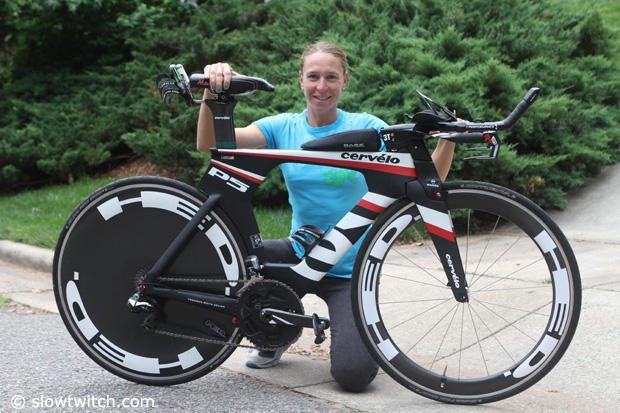
Team Marsh blog team-marsh.com
Sharing America's Marrow sharingamericasmarrow.com
Amy’s YouCaring account youcaring.com
BeTheMatch website bethematch.org
Delete Blood Cancer deletebloodcancer.org
The Blood and Tissue Center of Central Texas inyourhands.org


